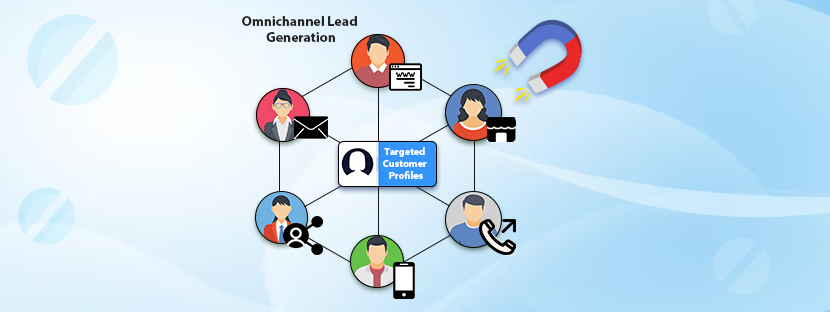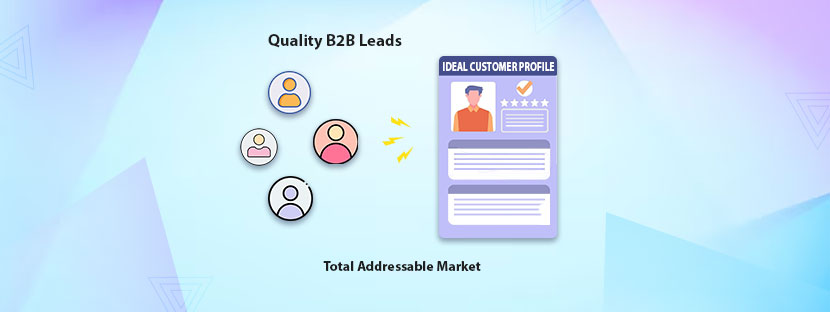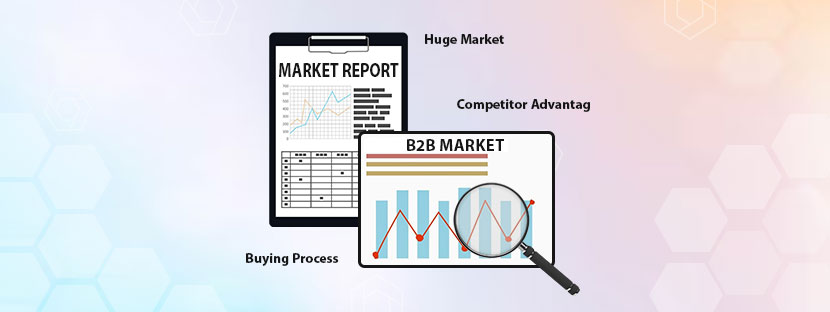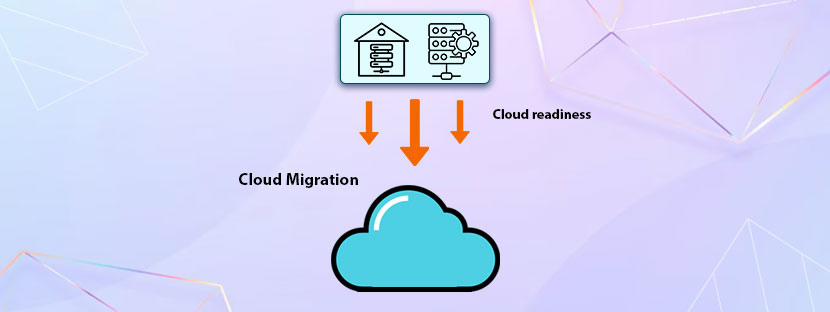Omnichannel lead generation strategies work the best in the B2B domain. It helps businesses to reach out and nurture their leads more effectively.
Interestingly, omnichannel strategies are widely popular and used across the industry for generating leads. Let’s talk about these strategies more in this blog.
What is omnichannel lead generation?
Omnichannel lead generation is a marketing approach that enables businesses to connect and engage with their desired prospects across multiple platforms. It aims to soak up multiple data touchpoints throughout the buying journey to ensure a seamless user experience.
To start with the omnichannel lead generation strategy, you need to find your potential prospects using intent data based on your company’s targeted customer profiles. Once you get the prospect list along with the channel to communicate with them, you have to pitch cold emails. These emails should contain your products/services offerings. But do not forget to take proper follow-ups after a while. While doing the outreach, you can simultaneously focus on building up your website, setting call booking options, and finding new ways to connect with your prospects.
To understand omnichannel leads generation in B2B, you must have a clear knowledge of the other marketing channels too. Let’s discuss other models of marketing channels in this section.
✔️ Single-Channel Lead Generation: It engages with prospects through a single outreach process, most preferably via email. This means you have to limit your lead generation as you have to solely focus on emails
✔️ Multichannel Lead Generation: Rather than being limited to any single communication model, multichannel covers different ways of communication. It covers cold emails, cold messages, cold calling, and other ways to connect with prospects. Basically, it covers the prospects from different angles of communication.
✔️ Cross-Channel Lead Generation: After multichannel but before omnichannel, there lies cross-channel lead generation. It includes sending an email, then retargeting the same prospect with a LinkedIn message, and thereafter making a cold call. Cross-channel works more synchronized way, which is unlikely to happen in multichannel lead generation strategies.
Why is omnichannel outpacing single-channel and other strategies?
Omnichannel lead generation strategies always outperform traditional lead generation strategies. Over time, the market has evolved, and the lead acquisition strategies have also changed and become more complex. In the past, businesses did not have to make complex processes to get prospects. Less precision is required to drive more conversions in single-channel lead generation.
However, at present, sending cold emails or making cold calls does not work. It requires additional things to close the deals faster. Omnichannel lead generation strategies help here to target prospects more effectively with the right kind of strategies. Omnichannel strategies allow to get more visibility. For example, after sending a cold email, you can send a message to your prospects on LinkedIn, and then you can make a cold call in a chain order.
What do most companies get wrong about omnichannel lead generation?
In most cases, businesses often get confused between omnichannel and multichannel lead generation strategies. Well, they are not the same. Omnichannel is far more advanced and can provide interconnection between the lead outreach touchpoints, which are not available in other lead generation strategies.
Step-by-step omnichannel lead generation process

Generating leads via email is the toughest area that businesses face currently. However, 78% businesses still use email marketing strategies specifically for lead generation. Not only just lead generation, but emails are also used for nurturing the leads. Besides emails, there are other channels like LinkedIn, call, text messages, etc, that omnichannel lead generation strategies help you to reach.
Here is the step-by-step approach you can follow to generate, convert, and close more leads;
Lead research
Before you consider leads, you need to conduct comprehensive research about them. The leads you choose must fit your criteria. These lead types should match your ideal customer profile – otherwise, it is a mistake.
To save your time and resources, you need to conduct the lead research. You need to check the job title, industry, company size, and other various things. This will help you strategize your targets and help you reach your prospects quickly.
Personalization
Once you get all the information about your leads (their needs), you can develop personalized strategies accordingly. A personalized approach works the best when it comes to outreach or convincing prospects. When you address their needs with your products through personalized emails or any other communication mode, the chance of getting more conversions will increase.
To develop personalization, you need to work with a persona-based communication mode. You need to create customer profiles based on their needs and aspirations to create outreach funnels. For that, you need to process a large chunk of data to set this up. You can take help from an external team or outsource to get your data.
Understand the channel
🔸Now it comes to choosing the channel for the outreach. Omnichannel lead generation strategies offer different sets of outreach channels. You need to understand the channel to make your work easier.
◮ Emails are stable and asynchronous communication providers, which is the best for formal personalization outreach.
◮ LinkedIn is all about getting more personalized to connect with people. It helps to build a long-term rapport.
◮ Running Google Ads is more about creating awareness and keeping your prospects engaged with your offerings.
◮ Cold-calling or intent-based calling provides immediate and real-time attention. Your approach should be more persuasive and direct to avoid misunderstandings.
Engage and Nurture
Once you get your leads via the omnichannel lead generation strategies, you need to plan for nurturing them. Your lead-nurturing strategies should be in accordance with the platform you choose for outreach. For example, on LinkedIn, you need to create posts and engage in discussions to keep your leads nurtured. In email, you need to send newsletters about interesting news happening in the industry to keep your email leads nurtured.











